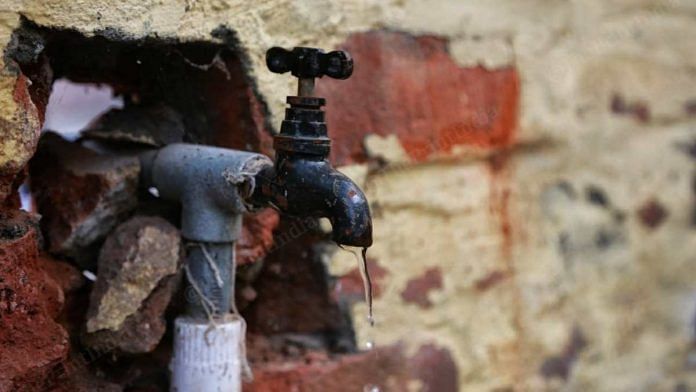New Delhi: Prime Minister Narendra Modi’s popularity has endured over the years in part due to his focus on giving poorer Indians things like cooking gas, toilets and electricity. Now he wants every rural home to have water by the next national election in 2024.
The Rs 3.6 trillion ($49 billion) program will put piped water in all of India’s 192 million rural homes — more than all the houses in the U.S. — over the next four years. That won’t be easy: Currently only 70 million Indian households have piped water, or about 36% of the target.
“The mission is an acknowledgment that if we in India don’t fix our water availability this might become a limiting factor in our quest for faster socio-economic development,” Bharat Lal, who heads the Jal Jeevan Mission, a special division for piped and potable water in India’s Water Ministry, said in an interview in New Delhi. “Water is critical, the most important fundamental.”
Modi’s government has faced months of protests from farmers over a law they say will boost corporate influence over agriculture, a movement that has helped rally opposition forces who also accuse him of stoking sectarian tensions between Hindus and Muslims. Still, programs like the piped water plan help explain why the ruling Bharatiya Janata Party has steadily consolidated power across the country since 2014.
Access to water is becoming a more urgent political issue: The government’s planning body projects demand will be twice the available supply by 2030, leading to shortages for hundreds of millions of people that will hurt economic growth. The 2018 report said India was “suffering from the worst water crisis in its history and millions of lives and livelihoods are under threat.”
Also read: Modi govt fixes protocol for water testing, mandates accredited labs at all levels
Depleting resource
Modi’s program aims to supply at least 55 liters of potable water to each person per day by building new pipelines and refurbishing existing networks, Lal said. It plans to use groundwater in areas of large river basins and set up desalination plants in coastal areas, he added.
Currently, India is the world’s biggest extractor of groundwater — more than China and the U.S. combined — accounting for almost a quarter of the total extracted globally, according to Water Aid. Groundwater levels in the country declined by 61% between 2007 and 2017, the government told parliament in Nov. 2019 citing data from an irrigation census.
“The plan will work if India manages to simultaneously strengthen water sources,” said Romit Sen, associate director at the Montpelier, Vermont-based Institute for Sustainable Communities. “We will need to fix the backend to ensure it doesn’t encourage exploitation.”
Past efforts at supplying drinking water to Indian villages have largely failed. In 2018, India’s federal auditor blamed poor execution and contract management for shortcomings in its rural drinking water program, a former avatar of the country’s piped water push.
Modi’s plan calls for working with village bodies, states and private companies. It’s already seeing some initial gains: The number of rural homes with tap water has more than doubled since 2019 to about 70 million.
Election connection
Adding 100,000-plus water connections every day has also meant creating more jobs and revenue at companies that make pipes, cement and plastic, Lal said. The government plans to contract work worth $27 billion in 2021.
Since coming to power, Modi has used welfare schemes to target voters, especially women. In 2016, the government subsidized cooking fuel for poor families. Two years later ahead of national elections it introduced minimum wages as well as social security for domestic workers, the bulk of whom are women. It also increased maternity and childcare benefits.
“On a socio-political front, a program like this really matters. In most parts of India, it is the women who fetch water for their households,” said Aditya Bhol, a researcher at New Delhi’s Center for Policy Research. “Having said that, this is an ambitious plan and going by the earlier projects in this field, the government will have to ensure it is thinking long term.”- Bloomberg
Also read: All homes in Telangana villages now have tap water, but it’s not a Nal Se Jal story alone







Clean water for 19cr ppl in next 3 years “election play”
But Kejriwal going for Olympics in 2045 is “forward thinking”…LOL !!
This print is a blueprint of pappu gandhi?
Modi slow down bro, don’t develop India so quickly, leave at least something for your successor in 2029, we’ve had enough of you fulfilling all your promises of $5 trillion economy, strong rupee value, 8% GDP growth, 14Cr jobs since 2014, reclaiming land from China, stopping rapes, ₹40/l petrol, free LPG, 100% electrification of India, 100% toilets for homes in India, bringing back black money, very low food prices, GPS embedded ₹2000 note, bullet train.
Seriously……stop….. give the A__ hole parivartan a break